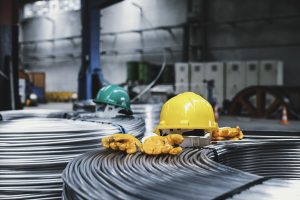Countries all around the world are coming up with novel strategies, technologies, and innovations to combat the looming threat of global warming. A few years ago, the consequences of climate change were limited to research and academic debates; however, scientists and governments are slowly formulating systematic approaches to reduce the impact of growing environmental degradation.
It is important to understand that climate change is an abstract term used to describe a vast idea meaning, natural processes like global warming, deforestation, soil erosion, water pollution etc., that are not springing from one commonplace. In contrast, it is a result of several processes, actions and personal decisions taken by people, society, businesses and industries.
In this article, we will be highlighting how the process of mining is closely interlinked with climate change, and the approaches industries take to assess risks, develop strategies, and practice accountability to ensure that the mining industry actively contributes to paving the way for a sustainable and cleaner future.
How Does Mining Industry Contribute to Climate Change?
Before we delve into how the mining industry contributes to climate change, let us focus on why the process of mining is integral to the smooth functioning of our society. As most people know, the extraction of geological materials, minerals, and other valuable resources from the earth is known as mining. However, today, modern mining can be divided into two categories: surface mining and underground mining.
In surface mining, in order to remove the ores near the earth’s surface, the ground is voluntarily exploded, and the collected material is carried to the best refineries to obtain high-quality minerals. On the other hand, in underground mining, to reach the ore deposits, miners blast tunnels into the rock so that ores are extracted from deep within the surface of the earth.
However, in both cases, the mining process facilitates climate change that leads to various health problems. Below we have mentioned some of the many ways in which mining industries proves to be one of the major contributors to climate change:
- The process of mining gives way to acid mine drainage, which is a type of water pollution
- All the mine waste disposal causes water pollution from a variety of toxic metals.
- The mining industry produces different types of fossil energy resources and greenhouse gases that contribute to global carbon emissions.
- Mining leads to frequent hazardous calamities like landslides, floods and more.
Steps Mining Industries Must Take to Control Climate Change
Since the mining industry is common across several countries and brings in huge amounts of profits and revenue for the overall growth and development, banning or finding an alternative is next to impossible. Therefore, several researchers are trying to find innovative strategies that will help mining industries prepare for climate change hazards. Here are a few climate change strategies that must be followed in mining companies and industries:
1. Rigorous Assessments
As mining industries are intricate and expansive, they have more than one electrical device to ensure that all tasks are carried out in a reliable manner. While some mining equipment and assets can stand the effects of climate change, others might need additional protective measures. Therefore, operators and administrators of the mining site must have a clear understanding of all the hardware they have deployed for their processes.
2. Renewable Energy
Mining requires both man force and technical support in equal measures. Hence, even though there are skilled professionals involved in the extraction process, mining industries also deploy a variety of heavy machines, equipment, and instruments.
One of the best ways of responding to the impact of climate change, mining executives must invest in renewable sources of energy which can significantly lower the electricity costs while reducing volatility.
3. Incorporation of Climate Intelligence
Owners of mining sites shoulder a huge responsibility towards the society, economy, and the environment, which is why it is essential to be updated with all sustainable ideas that are being introduced for the market. The incorporation of climate intelligence in all the decision-making processes can significantly lower the effect of climate change on the mining industry.
Mining and Climate Change Accountability
The breakout of covid-19 has given people time to pause and ponder over the consequences of irresponsible human actions. In the last couple of decades, with the onset of the digital revolution, industry owners of several sectors have been forced to analyze and introspect their business strategies and how they directly or indirectly contribute to environmental degradation. As mentioned above, mining and climate change are two closely linked spheres that directly impact one another.
Mining has multiple environmental damages like ecosystem degradation, land clearing, water pollution and more. Yet, the effect it has on the climate is rarely considered. One reason for this is that green technologies are designed and implemented in an oversimplified way in the mining industry. Therefore, there is a need for a strategic plan that can bring out quick results in a short span of time. In order to successfully combat the threatening impacts of climate change, mining industries can choose to focus on three primary areas:
- Assets vulnerable to physical impacts of climate change
- How decarbonization carries the potential to shift demands for crucial minerals
- How miners can be professionally trained to decarbonize their daily operations and procedures.
Combating Climate Change with Schneider Electric’s Mining Solutions
At Schneider Electric, we strive to cater strong, sustainable, and robust electric solutions to different sectors of society like IT, power, healthcare, hotels, and more. In order to bridge the gap between progress and sustainability, we have built a team of innovative and futuristic minds that deliver effective digital integrated operations for sustainable minerals, mining, and metals.
To reduce the effect of mining on climate change, we have devised a step-by-step sustainable strategy from renewables and electrification to process optimization and integrated operations. In collaboration with our trusted parted, AVEVA, EcoStruxure for metals, minerals, and mining effectively redefines the energy journey to enhance energy efficiency, operational excellence, and optimization of value chain performance.
Read More:


